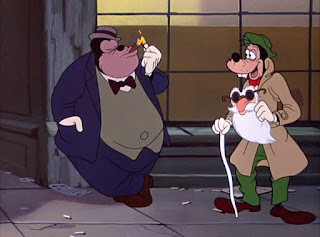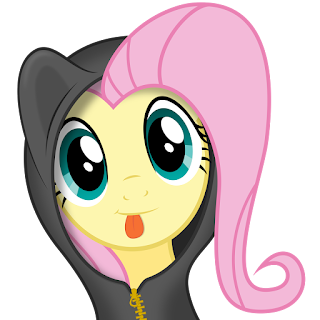Hey guys, I wanted to share with you this math paper on I did on Disney Imagineering that got me a 96.
Mathematics is found in many professions around the world
including in construction and theme park design. It is stated on Business.com’s
article about education needed for theme park design that for minds that wish
to enter the theme park construction, they should “foster a natural interest in
and understanding of science, math, and physics”. (Wheeler, 2017)
The leading example of mathematical minds in the theme park industry is
perhaps the Walt Disney Imagineers.
Imagineers are some of the most creative minds working today. Imagineering is a portmanteau word that as
the About Imagineering page on the Disney Imagineers website states that it is
a combination of imagination and engineering. (About
Imagineering, n.d.)
Jeff Kurtti in his book, Walt Disney’s Imagineering Legends and The Genesis of the Disney Theme
Park elaborates on what Imagineering is by stating that it was first formed
by Walt Disney in 1952 as Walt Disney Incorporated (which would later become
WED) to build one of his biggest projects, Disneyland. Kurtti goes onto explain that “Walt Disney
Imagineering remains the design, development, and master planning branch of the
company employing a multitude of disciplines utilized in places all around the
world”. (Kurtti, 2006) It has been seen in many projects that the
Imagineers have worked on, that the fields of science, technology, engineering,
and mathematics (S.T.E.M.) are required
in many of their projects. Whether it be
something on a smaller scale such as replacing an old ride with a new one or
adding a whole land to one of their many theme parks. One of the prominent ways that math features
in the Imagineering process is the usage of measurements and scales. One of the most ambitious undertakings for
the Imagineers came, when they brought Mount Everest to life in the state of
Florida at Disney’s Animal Kingdom as the rollercoaster, Expedition
Everest. Expedition Everest as of
this date is the largest manmade mountain that has been built. And as stated at Disneyavenue.com,
“Expedition Everest… is made from 18,000 tons of steel and painted with 2,000
gallons of paint. It is the tallest artificial mountain in Florida”. (Mahne, 2015)
As discussed by Disney Imagineer Senior VP, Joe Rhode in
the classroom DVD, The Science of Disney
Imagineering: Design and Models building Expedition Everest was no easy
feat. They needed to start with small
models before attempting to build the real thing. They needed to start with building what are
known as presentation and research models to get a better understanding of how
the mountain should look. As Rhode
explains to the host, Asa Kalama, “We started with these little paper
models. Which would give us the basic
idea of what the mountain would look like.
We built these clay models and added one inch pieces of paper that
covered 20 ft. of the model”. (Kaplan, 2009) Joe Rhode goes onto explain that by starting
with these models and using these smaller models helped the Imagineers to
figure how they needed to build Expedition Everest because as Rhode stated in a
prior scene, it’s easier to make a mistake on the models than it is when they
were building the real thing. One of
the most fascinating aspects that Rhode mentions is that they went through
twenty-seven different models before building the real thing in Florida. Building these twenty-seven different models
helped the Imagineers to have a concept of what Everest should look like, when the real mountain came to
fruition. This is an example of concept
design, which is described as “the initial big picture or macro design. It shows us what problems the product will
solve… and how it will solve them”. (Hedges, n.d.) This goes a long way in explaining why the
Imagineers had to build such a large number of different models as they would
not be able to determine from just one model, what aspects could cause them
difficulty.
Rhode
further explains that by starting with the smaller models of Everest, they can
figure out the scale and proportion for what Expedition Everest should’ve been
before embarking upon building this rather mountainous rollercoaster. Figuring out what the scale and proportion on
the miniature mountain was a crucial necessity for them to understand what the
relationship needed to be in relation to how they were going to build their
artificial Everest. With this build,
they did have the real Mount Everest to use as a basis but their rollercoaster
mountain needed to be scaled down considerably from 29,029 Ft. that the real Everest stands at whereas the
one at Disney’s Animal Kingdom only comes in at 199.5 Ft. but Rhode went ahead
and rounded this up to 200 Ft. That’s
a difference of 28,829 Ft. between the real Everest and the one that was
brought to life by the Imagineers. To
elaborate upon this, further, “scale refers to the size of an object (a whole)
in relationship to another object (another whole)”. (Lamp,
n.d.)
It is highly emphasized that the team of Imagineers that worked on Expedition
Everest needed an understanding of how scale and proportion functioned in order
to ensure that the manmade mountain was up to scale.
The Imagineers needed to
have a firm understanding of what the scale and proportion for Expedition
Everest. And one way, they were able to figure how tall the mountain needed to
be was by travelling to the real Everest and were able to transpose the
information of what the scale of Everest, when they came back stateside to
start working on building Expedition Everest.
This gave them the basis for what the rollercoaster’s height should be. Once again, Expedition Everest’s height is 200
Ft. and that is relation to its length, which comes in at 4,424 Ft. It should be noted that the 200 Ft. height
primarily refers to the exterior and the length of the track focuses on the
interior of the rollercoaster.
Concerning the length of the track that is found on the interior, this
is where Disney Imagineer, Todd Camill steps in and explains that he designed a
computer-aided-designed (CAD) model to figure out how to sufficiently place the
track that would be laid on the inside of Expedition Everest. Using the CAD model is yet another example of
how Imagineers such as Todd Camill
needed to have a design of the concept before the construction crew could start
laying the groundwork for the rollercoaster. Camill explains that “this model at one point
helped us (the Imagineers) discover a steel beam that would’ve ran right
through ride track”. (Kaplan, 2009)
This is another example of why it is important for the Imagineers to
have a succinct understanding of what the relationship between the scale and
proportion should be before they set upon building a ride of this
magnitude.
One can imagine that this was a very laborious
and daunting endeavor to bring the world’s most famous mountain to life in a
state that is rather flat. There were
many things that the Imagineers needed to consider, when working on the
architecture of this ride and knowing what the scale and proportion or the relationship
for the ride was going to be while building it is perhaps the most important
thing that they needed to understand.
For, if they had made any error while building the models, they may not
have had the space to lay the 4,424 pieces of track that are needed for the
cars that the guests sit in. It could have ended up being too tight. To most
people visiting a theme park like Disney’s Animal Kingdom, they will most
likely never notice of the hard work that the Imagineers put into a ride like
Expedition Everest but were it not for them deducing what the ride’s
mathematical relationship should be, the guests that ride this rollercoaster
would never be able to experience the rush and adrenaline that comes from riding
Expedition Everest.
References
About Imagineering. (n.d.). Retrieved from Walt Disney Imagineering Imaginations: Dream .
Design . Diversfy:
https://disneyimaginations.com/about-imaginations/about-imagineering/
Hedges, G. (n.d.). What is Concept Design? A
Product Development Perspective . Retrieved from ptc :
http://www.ptc.com/cad-software-blog/what-is-concept-design
Kaplan, D. (Director). (2009). The Science of
Disney Imagineering: Design and Models [Motion Picture].
Kurtti, J. (2006). What is Walt Disney Imagineering
. In J. Kurtti, Walt Disney's Imagineering Legends and The Genesis of The
Disney Theme Park (p. vii). New York City : Disney Editions .
Lamp, L. (n.d.). Design in Art: Scale and
Proportion. Retrieved from Sophia :
https://www.sophia.org/tutorials/design-in-art-scale-and-proportion
Mahne, K. (2015, July 12). Making of: Expedition
Everest. Retrieved from Disney Avenue :
http://www.disneyavenue.com/2015/07/making-of-expedition-everest.html
Wheeler, N. (2017, February 22). Amusement Park
Designers and Education Training . Retrieved from Business.com :
https://www.business.com/articles/amusement-park-designers-education-and-training/

































